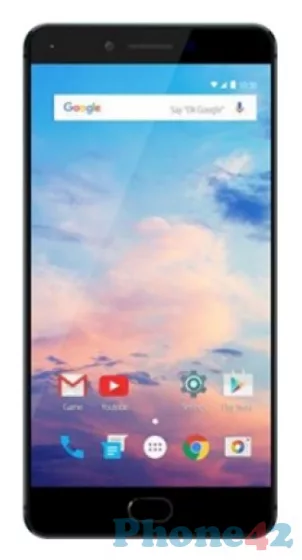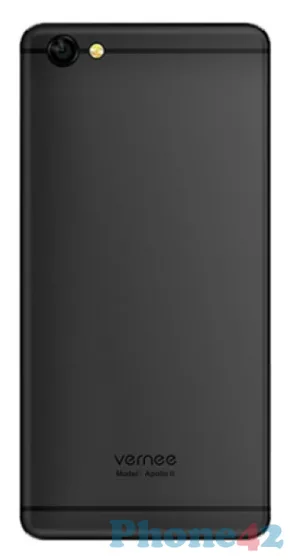
Vernee Apollo 2 (2018)
This phone boasts a 6 inch IPS display, a Mediatek Helio X30 MT6799 chipset, and 6 GB of RAM.
Take a journey through its pros and cons!
Table of Contents
- Vernee Apollo 2 specifications
- Weight, dimensions, colors
- System, chipset, performance
- Display type, size, resolution
- Memory, storage
- Cameras, flash
- Connectivity, network, wireless
- Battery type, capacity, charger
- Features, sensors, specials
- Verdict, pros and cons
This article shares our personal experiences and thoughts about using the Vernee Apollo 2 smartphone. We hope to offer helpful insights to others interested in this device.

Vernee Apollo 2 specifications
| Brand | Vernee |
|---|---|
| Name | Apollo 2 |
| Model | APOLLO2 |
| Release date | 2018 |
Weight, dimensions, colors
| Weight | 6.28 oz |
|---|---|
| Dimensions | 5.98 x 2.99 x 0.35 inch |
| Colors | black, red |
| SIM type | Nano SIM |
The weight of the Vernee Apollo 2 is still considered to be lightweight and portable. Smartphones use a Nano SIM as a subscriber identity module (SIM), which is a chip card.
System, chipset, performance
| OS version | Android OS v8.0 (Oreo) |
|---|---|
| SoC | Mediatek Helio X30 MT6799 |
| CPU | Deca-core, Dual-core 2.6 GHz Cortex-A73, Quad-core 2.2 GHz Cortex-A53, Quad-core 1.9 GHz Cortex-A35 |
| GPU | PowerVR 7400XT MP4 |
The Vernee Apollo 2 comes with Android OS v8.0 (Oreo) out of the box. Android is an open-source operating system. This means users and developers have more control over the software. The Apollo 2 utilizes Mediatek Helio X30 MT6799 SoC (System on a Chip). Many consider PowerVR GPUs to highly compete with other leading mobile GPUs.
Display type, size, resolution
| Display type | IPS |
|---|---|
| Screen size | 6 inch |
| Resolution | 1080 x 2160 px |
| Multitouch support | yes |
People know IPS for its wide viewing angles. It also has accurate color reproduction. The 6 inch display should be big enough for our needs. It will make viewing comfortable. This is true whether we're reading, browsing, or watching. The display size is the diagonal distance from one corner of the screen to the opposite corner.

Memory, storage
| RAM | 6 GB |
|---|---|
| Internal storage | 128 GB |
| Memory card slot | microSD |
The Vernee Apollo 2 comes with 6 GB of RAM, which is considered to be sufficient for most users' needs. More RAM lets us keep more apps and processes open in the background. This keeps the device from slowing down. The Apollo 2 has 128 GB of internal storage, which is more than enough for their needs. We can expand the internal storage of the Apollo 2 (128 GB) by using a compatible microSD card.
Cameras, flash
| Main camera | 16 + 13 MP, 4608 x 3456 px, autofocus |
|---|---|
| Flash | Dual LED |
| Selfie camera | 8 MP |
Using multiple cameras has advantages. They provide more versatility and creative possibilities. They let us capture a wider range of subjects. The main camera of Apollo 2 smartphone does not have OIS. The optical image stabilization (OIS) is an important feature in smartphones.
Connectivity, network, wireless
| GSM 2G bands | 850 / 900 / 1800 / 1900 |
|---|---|
| Network coverage | 2G / 3G / 4G |
| Wi-Fi | Wi-Fi 802.11 b/g/n |
| Bluetooth | v4.0, A2DP |
| GPS | A-GPS, GLONASS |
| NFC | no |
| FM radio | yes |
| USB | USB Type-C |
| Headphone | USB Type-C adapter |
The 4G provides faster data transfer speeds compared to previous generations. This Vernee phone can connect to Wi-Fi networks at home, at work, or in public places. We can use Bluetooth to connect our Apollo 2 smartphone to many Bluetooth devices. This phone has a built-in GPS receiver. The phone isn't NFC (Near Field Communication) capable. NFC is not essential for basic phone functionality, but it can be useful. The Apollo 2 smartphone does not have 3.5 mm headphone jack.
Battery type, capacity, charger
| Type | Li-Po 5000 mAh, non-removable |
|---|
The Li-Po 5000 mAh, non-removable battery gives the smartphone a good battery backup. The lithium polymer (Li-Po) battery is a light-weight, rechargeable battery. The Apollo 2 does not have a removable battery, it integrates the battery into the phone's design.
Features, sensors, specials
| Sensors | accelerometer, compass, fingerprint, gyroscope, hall, light, proximity |
|---|---|
| Specials | Dual SIM, Fast charging, VOS |
Today, smartphones come with many sensors. They help make the user experience better. The accelerometer is a sensor. It measures the tilting motion and orientation of the phone. The fingerprint reader is a biometric security feature found in Apollo 2 smartphones. The light sensor is a type of sensor in a smartphone. It lets the phone measure light intensity around the device. Dual SIM is great for businesses. They want to give staff a device with separate numbers and bills for personal and business use. With fast charging, we can get a significant amount of battery life in a few minutes of charging.
Verdict, pros and cons
Every phone has its strengths and weaknesses, and this Vernee phone is no exception. As with any device, there are aspects that shine and others that fall short. By examining both sides, we can paint a complete picture of what this phone has to offer. Let's explore its standout features and areas for improvement. Remember, this is just my opinion, and yours might be different.
Pros
- appropriate screen size
- adequate memory
- generous internal storage
- microSD slot
- multicamera setup
- good battery
- Dual SIM support
Cons
- no OIS function
- no 5G support
- no NFC feature
- no headphone jack
Please let us know if you find incorrect information or something isn't working. Also, tell us if you have a suggestion for improvement.
Updated: July 8, 2024
 I'm Lucas Bradley, the founder of the Phone42.com site. I love technology, especially smartphones, and I've been working with tech stuff for more than 20 years. This means I've seen a lot of changes and have learned a bunch about what makes a good phone. On Phone42.com, I look at all kinds of phones. They can be from big, well-known companies or new ones trying to make their mark. I want to help people understand what's new and cool in the world of smartphones, in a way that's easy to get.
I'm Lucas Bradley, the founder of the Phone42.com site. I love technology, especially smartphones, and I've been working with tech stuff for more than 20 years. This means I've seen a lot of changes and have learned a bunch about what makes a good phone. On Phone42.com, I look at all kinds of phones. They can be from big, well-known companies or new ones trying to make their mark. I want to help people understand what's new and cool in the world of smartphones, in a way that's easy to get.